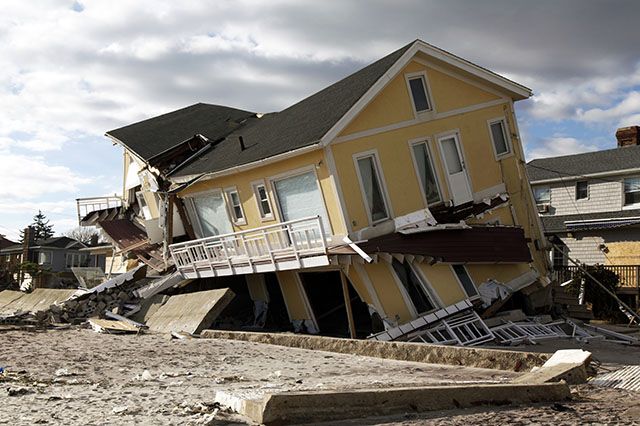
www.buildingsandcities.org/insights/commentaries/climate-emergency-and-built-environment-education.html
Climate Emergency and Built Environment Education

Fionn Stevenson explains why rapid change is needed to redefine education and training. Students need to be able to access and understand existing principles, methods and solutions for carefully defined, problem and evidence-based learning. The built environment disciplines and their corresponding institutes / regulators must radically update their professional validation criteria for their education programmes now and more closely define the key competences that professionals must have.
The Challenge
The 2018 landmark report by the UN Intergovernmental Panel on Climate Change (IPCC, 2018) warns there is now just 11 years for global warming to be kept to a maximum of 1.5 C, to avoid catastrophic drought, floods, extreme heat and poverty for hundreds of millions of people. The UK Committee on Climate Change Progress Report 2018 (CCC, 2018) shows that temperature adjusted annual direct emissions from UK buildings in 2017 rose for the second successive year, by around 1% relative to the previous year. Urgent and unprecedented changes are therefore needed in built environment education to reach zero carbon targets as well as reduce negative environmental impacts, which are both affordable and feasible.
At the same time technology-driven futures in education related to artificial intelligence, BIM (Building Information Modelling), robots and online learning need greater emphasis on inclusivity, BAME (Black, Asian and Minority Ethnic), gender and access issues. Technology innovations in built environment typically take 30 years to embed - we don't have that time available in this climate emergency and the solutions are already available. Instead, we need to rapidly change educational approaches to help students to be able to access and understand existingprinciples, methods and solutions for carefully defined, problem and evidence-based learning.
Changing Values
Most professional institutions (based on 19th and 20th Century thinking) have an anthropocentric set of values, which is precisely what has got us into this climate and biodiversity emergency in the first place. Educational and professional values need to have a much stronger eco-centric focus, so that we co-steward our community, resources and planet together with other species that have already evolved to do this automatically as part of their sustainable ecosystems. Equally we need to move towards education that promotes citizen and species co-production of the built environment together with professionals as co-designers.
New Professionalism calls for professionals to do the right thing, develop trusting relationships, with open and honest collaboration, and reflect upon performance in use through feedback. It requires the humility to openly learn from mistakes, to challenge assumptions and standards, be honest about professional ignorance and understand contexts and constraints. It asks professionals to create lasting value and keep options open for the future (Bordass and Leaman, 2013; RIBA, 2019). Much of this has not been captured by most countries' current built environment professional validation criteria which set out the curricula principles and standards that higher education programmes leading to a professional qualification must adhere to. Educators and professional training programmes need to respond to all of the above-mentioned principles and adopt a slow and inclusive design approach to ensure natural and social flourishing. The first step is having the appropriate understanding, knowledge and skills. It then becomes much easier to change professional work routines (contracts, responsibilities and duties) and take appropriate responsibilities for outcomes.
Beyond this, Howard Liddell and Sandy Halliday, from the international Gaia Group, famously applied a new Hippocratic Oath for the built environment professional: "Do No Harm" in the world's first Sustainable Building Design Accreditation Scheme for the Royal Incorporation of Architects in Scotland (https://www.rias.org.uk/for-the-public/sustainability). This was pioneered in 2004 with individual designers evaluated on the actual performance of their built and occupied projects against six core principles:
- Designing for Effective Resource Use
- Minimising Pollution
- Supporting Communities
- Promoting Biodiversity
- Creating Healthy Environments
- Managing the Build Process
This excellent scheme provides a useful model for the rest of the world to consider and adapt in terms of genuinely evidencing sustainable design standards.
Where does the responsibility lie for redefining education and training in terms of these combined values? Is it with the built environment professional institutions, the licensing bodies for professionals (where they exist) or is it with the higher education programmes associated with these disciplines? In many countries, the built environment professional institutions must provide the leadership for this to happen and not stymie change. They can achieve this by radically updating their professional validation criteria for their education programmes now and more closely defining the key competences that professionals must have. This would be followed by significant changes to education programme curricula through a 1-year review followed by a 2-year implementation (develop changes, implement them). We have no time to wait. The risks by not acting presently not only endanger the planet but are likely to marginalise professionals as they will lack the necessary skills.
Promoting a new understanding
Built environment education operates within a nexus of humanities, technology and design. There is now an imperative to create professionals with breadth and sophisticated team-working capabilities as well as depth of specialist knowledge and skills (so-called T-shaped professionals). Pioneering joint or triple accredited programmes such as combined architecture and engineering already exist and provide some useful models. However, these are in the minority when arguably they should be in the majority.
Validation Criteria for professional education programmes must signal the need to demonstrate socio-environmental feedback skills and sound evidence-based understanding related to the critical building science principles and processes that inform any application of technology and design in the built environment. Equally, design studios need to re-orientate towards an eco-centric approach involving citizen/species co-design and co-production through the development of far more 'live projects'. This approach would allow students to move away from current ego-centric, individualistic and unresponsive "imaginaries" towards problem-based learning and outcomes that work through collaboration and teamwork in the real world. This urgent need for radical change also requires educators to do some serious soul searching and to challenge the institutions that currently govern their curricula.
References
Bordass, B. and Leaman, A. (2013) A new professionalism: remedy or fantasy? Building Research & Information, 41(1), 1-7. https://www.tandfonline.com/doi/full/10.1080/09613218.2012.750572
Committee on Climate Change (2018) Reducing UK Emissions: 2018 Progress Report to Parliament. London: Committee on Climate Change.
https://www.theccc.org.uk/publication/reducing-uk-emissions-2018-progress-report-to-parliament/
IPCC, 2018: Summary for Policymakers. In: Global Warming of 1.5°C. An IPCC Special Report on the impacts of global warming of 1.5°C above pre-industrial levels and related global greenhouse gas emission pathways, in the context of strengthening the global response to the threat of climate change, sustainable development, and efforts to eradicate poverty [Masson-Delmotte, V., P. Zhai, H.-O. Pörtner, D. Roberts, J. Skea, P.R. Shukla, A. Pirani, W. Moufouma-Okia, C. Péan, R. Pidcock, S. Connors, J.B.R. Matthews, Y. Chen, X. Zhou, M.I. Gomis, E. Lonnoy, Maycock, M. Tignor, and T. Waterfield (eds.)]. Geneva: World Meteorological Organization. https://www.ipcc.ch/
RIBA (2019) RIBA: Code of Professional Conduct. London: RIBA.
https://www.architecture.com/-/media/gathercontent/work-with-us/additional-documents/code-of-professional-conduct--may-2019pdf.pdf
Latest Peer-Reviewed Journal Content
Designing for pro-environmental behaviour change: the aspiration–reality gap
J Simpson & J Uttley
Lifetimes of demolished buildings in US and European cities
J Berglund-Brown, I Dobie, J Hewitt, C De Wolf & J Ochsendorf
Expanding the framework of urban living labs using grassroots methods
T Ahmed, I Delsante & L Migliavacca
Youth engagement in urban living labs: tools, methods and pedagogies
N Charalambous, C Panayi, C Mady, T Augustinčić & D Berc
Co-creating urban transformation: a stakeholder analysis for Germany’s heat transition
P Heger, C Bieber, M Hendawy & A Shooshtari
Placemaking living lab: creating resilient social and spatial infrastructures
M Dodd, N Madabhushi & R Lees
Church pipe organs: historical tuning records as indoor environmental evidence
B Bingley, A Knight & Y Xing
A framework for 1.5°C-aligned GHG budgets in architecture
G Betti, I Spaar, D Bachmann, A Jerosch-Herold, E Kühner, R Yang, K Avhad & S Sinning
Net zero retrofit of the building stock [editorial]
D Godoy-Shimizu & P Steadman
Co-learning in living labs: nurturing civic agency and resilience
A Belfield
The importance of multi-roles and code-switching in living labs
H Noller & A Tarik
Researchers’ shifting roles in living labs for knowledge co-production
C-C Dobre & G Faldi
Increasing civic resilience in urban living labs: city authorities’ roles
E Alatalo, M Laine & M Kyrönviita
Co-curation as civic practice in community engagement
Z Li, M Sunikka-Blank, R Purohit & F Samuel
Preserving buildings: emission reductions from circular economy strategies in Austria
N Alaux, V Kulmer, J Vogel & A Passer
Urban living labs: relationality between institutions and local circularity
P Palo, M Adelfio, J Lundin & E Brandão
Living labs: epistemic modelling, temporariness and land value
J Clossick, T Khonsari & U Steven
Co-creating interventions to prevent mosquito-borne disease transmission in hospitals
O Sloan Wood, E Lupenza, D M Agnello, J B Knudsen, M Msellem, K L Schiøler & F Saleh
Circularity at the neighbourhood scale: co-creative living lab lessons
J Honsa, A Versele, T Van de Kerckhove & C Piccardo
Positive energy districts and energy communities: how living labs create value
E Malakhatka, O Shafqat, A Sandoff & L Thuvander
Built environment governance and professionalism: the end of laissez-faire (again)
S Foxell
Co-creating justice in housing energy transitions through energy living labs
D Ricci, C Leiwakabessy, S van Wieringen, P de Koning & T Konstantinou
HVAC characterisation of existing Canadian buildings for decarbonisation retrofit identification
J Adebisi & J J McArthur
Simulation and the building performance gap [editorial]
M Donn
Developing criteria for effective building-sector commitments in nationally determined contributions
P Graham, K McFarlane & M Taheri
Join Our Community

The most important part of any journal is our people – readers, authors, reviewers, editorial board members and editors. You are cordially invited to join our community by joining our mailing list. We send out occasional emails about the journal – calls for papers, special issues, events and more.
We will not share your email with third parties. Read more


Latest Commentaries
COP30 Report
Matti Kuittinen (Aalto University) reflects on his experience of attending the 2025 UN Conference of the Parties in Belém, Brazil. The roadmaps and commitments failed to deliver the objectives of the 2025 Paris Agreement. However, 2 countries - Japan and Senegal - announced they are creating roadmaps to decarbonise their buildings. An international group of government ministers put housing on the agenda - specifying the need for reduced carbon and energy use along with affordability, quality and climate resilience.
Building-Related Research: New Context, New Challenges
Raymond J. Cole (University of British Columbia) reflects on the key challenges raised in the 34 commissioned essays for Buildings & Cities 5th anniversary. Not only are key research issues identified, but the consequences of changing contexts for conducting research and tailoring its influence on society are highlighted as key areas of action.